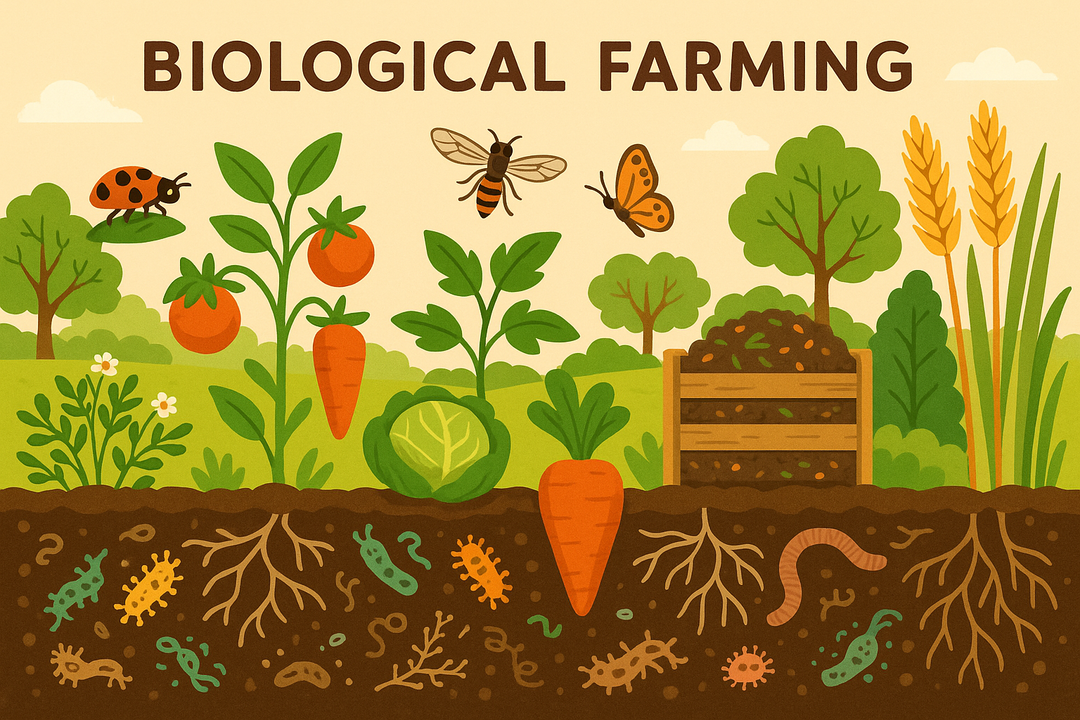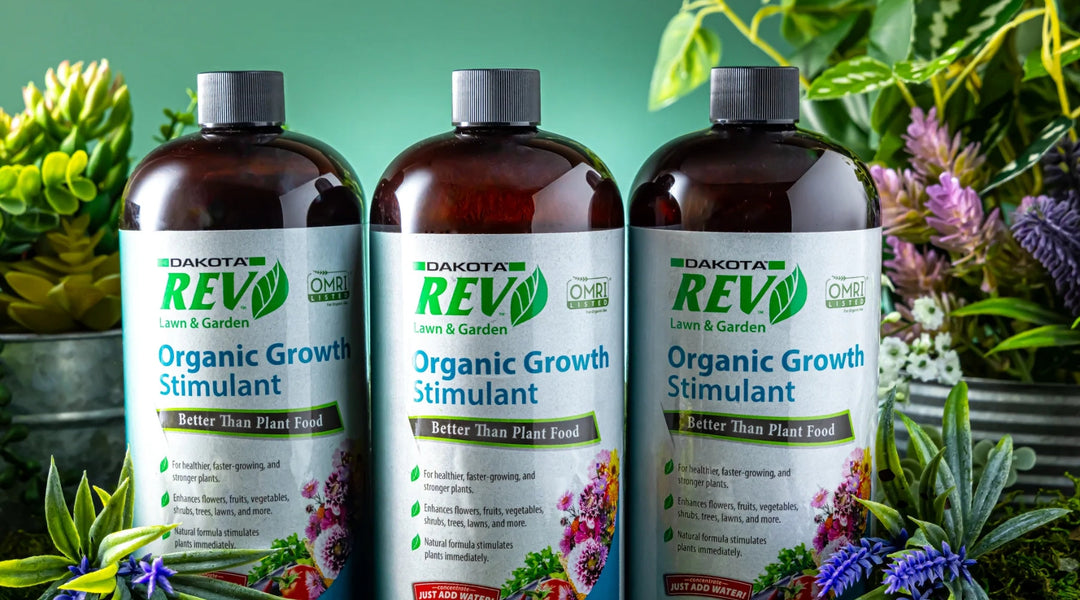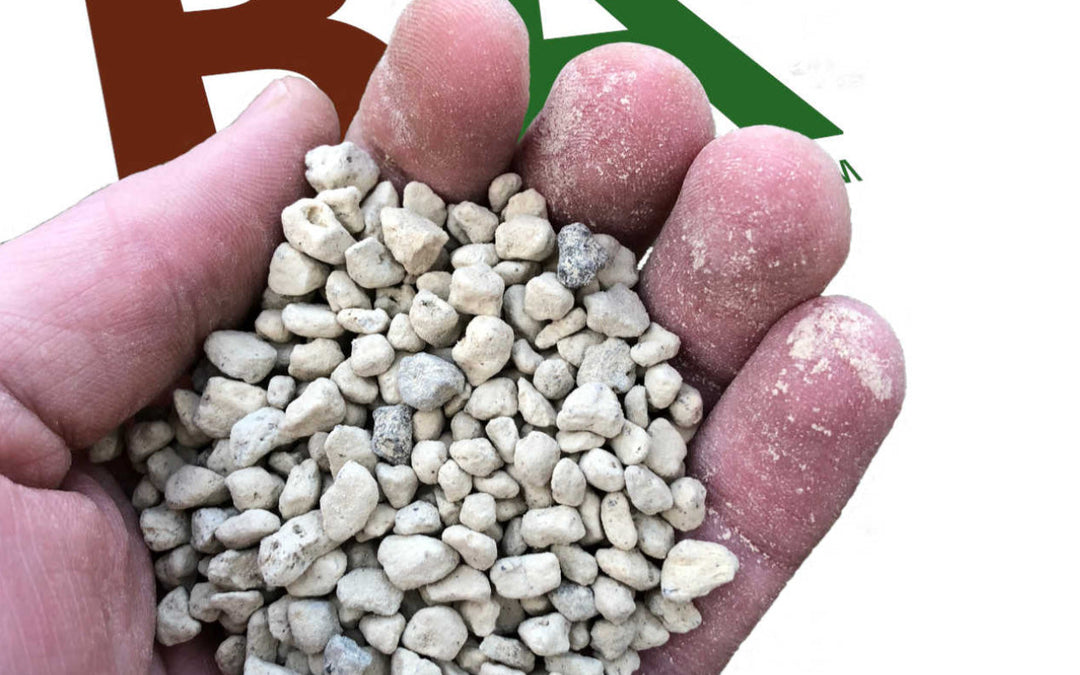Tomato Rot: An Overview of a Common Garden Problem
For flavor, shape, color, and cooking, there are few plant crops that offer as many benefits as tomatoes. Tomatoes can be a very productive and financially rewarding crop for a home gardener. The last thing you want coming between you and a bumper crop of vine-ripe tomatoes is tomato rot.
When it comes to setting your garden up for success, there are a few facts you should know about tomato rot. It’s important to arm yourself with knowledge of what to look for and how to avoid the spread of this common problem. From what it is to how to prevent it, we’ll walk you through the basics of this unwelcome garden guest.
What is Tomato Rot?
 Also called blossom end rot, this is a physiological disorder of the fruit in which the blossom end of the fruit (or the opposite end from the stem) breaks down and rots. You may first notice tomato rot as water-soaked spots on the end of your tomatoes. This breakdown happens quickly, and the area becomes sunken and leathery.
Also called blossom end rot, this is a physiological disorder of the fruit in which the blossom end of the fruit (or the opposite end from the stem) breaks down and rots. You may first notice tomato rot as water-soaked spots on the end of your tomatoes. This breakdown happens quickly, and the area becomes sunken and leathery.
You will most likely notice the affected area when the tissue breaks down and turns black. It can happen at any time during the maturation process and most often occurs with the first tomatoes of the season. But take heart, tomato lover, that is not the end of the story for your tomato plant or garden.
What Causes Tomato Rot?
This common issue found in tomato plants is not a bug or a disease. The main cause of tomato rot is a lack of calcium. When water is in short supply, for example, it is hard for calcium to get from the roots of the plant to the developing fruit, so rot can occur. If the growing season in your area starts out with lots of rainy days and then shifts to dry conditions as your plants begin to produce fruit, keep an eye out for tomato rot.
There are other issues that may cause tomato rot that relates to nutrients in the soil. While the exact cause is highly debated, it is known that it only affects fruits of a certain size. For example, cherry tomatoes are not affected by tomato rot, so in this case, size matters. Also, it is common in other garden varieties such as peppers, eggplant, melons, and squash.
Other Causes of Tomato Rot
- Low phosphorus
- High magnesium
- High nitrogen
- High potassium
- High salinity
Breaking Down Tomato Rot
If you are experiencing tomato rot, that means there is not enough calcium in the tissue of the tomatoes. When the calcium is taken up into the plant through the roots, it may settle in one part of the plant. Rot can occur even when there is sufficient calcium in the soil, stems, or leaves. Therefore, consistent soil moisture throughout the growing season is key to ending tomato rot and, ultimately, the success of your tomato plants.
Is Tomato Rot Contagious?

No, a symptomatic tomato will not spread tomato rot to another plant in your garden. There is no need to apply fungicides or other chemical control to alleviate the problem. The condition will resolve when your garden gets consistent moisture, and your plant’s root system is able to access good levels of calcium.
Can Over-Watering Cause Tomato Rot?
Overwatering can cause as much of a problem for your tomato plant as underwatering. When a plant is overwatered, it starts sending signals, such as yellow leaves, that it is taking in too much water. Eventually, the roots will begin to rot, and the washout of calcium in the soil will be seen through the development of tomato rot.
Can You Eat Tomatoes That Have Blossom End Rot?
It is safe to eat the unaffected parts of the fruit with tomato rot. Simply cut away the blackened part. You will want to remove any damaged tomatoes from the plants because the rot cannot be reversed. The damaged tomatoes will continue to drain the moisture and calcium needed by the healthy fruit remaining on the plant.
Can Root Damage Lead to Tomato Rot?
If a plant has root damage, this will interfere with its ability to take up nutrients. This includes waterlogged soil and damage from cultivating too close. Nutrient and water uptake can also be reduced when the roots have been damaged by fertilizer. Each of these forms of damage can lead to reduced calcium and, therefore, tomato rot.
Easy Ways to End Tomato Rot
- Keep plants well-watered
- Add mulch around plants
- Don’t over-fertilize
- Care for the roots
Maintain a Consistent Supply of Soil Moisture
Tomatoes are best grown in well-draining soil high in organic matter. The fruit excels in soils with a pH between 6.5 and 7.5. During the growing season, ensure that the plants receive at least 1 inch of water per week through rainfall or irrigation.
Keeping plants well-watered through the growing season means different things at different times. Early in the growing season, you can water the plants daily in the morning. As temperatures increase, you may want to increase watering to twice a day.
If you are unsure if you are watering too much or too little, there’s a gadget for that. A soil moisture meter will help you know if your plants are getting too dry or if they are getting overwatered. Do you really need one? That is entirely up to you, but if you are having consistent challenges, this could be a wise investment to eliminate one possible cause of tomato rot.
Mulching Helps to Conserve Moisture in the Soil

Organic mulch helps the environment as much as your tomato garden. Stick to natural mulching sources, such as straw, grass clippings, peat moss, or wood chips. Adding a thick layer around the base of your plants helps hold the moisture in the soil, keeping the soil more consistent between waterings.
Covering your soil with mulch doesn’t just protect the plants and the soil; it energizes them as well. The thick layer of mulch protects the soil and roots from temperature swings. This can be particularly helpful in those climates where the weather is undecided throughout the day, ranging from chilly to blistering hot within a few short hours.
Mulch will also protect your garden from weeds. Not only is an overgrown garden unsightly, but those weeds are stealing valuable resources from the soil, including the nutrients needed by the very hungry tomato plants. Weeds attract pests, so always keep mulch in your garden to keep it from being a safe haven for the bugs that love to attack your tomato plants.
Consider Naturally Occurring Calcium Before Adding Fertilizer to End Tomato Rot
Depending on the levels of naturally existing calcium in the soil where you live, you may want to add fertilizer to eliminate one cause of tomato rot. A quick soil test will give you the answers you need regarding your soil. Use fertilizers low in nitrogen but high in superphosphate to end tomato rot in your garden.
What Do the Numbers on Fertilizer Mean?
All fertilizer labels have three bold numbers that represent the N-P-K ratio. The first number is for the amount of nitrogen (N), the second number is for the amount of phosphate (P2O5), and the third number is for the amount of potash (K2O). They represent the three primary nutrients – nitrogen (N), phosphorus (P), and potassium (K).
What NPK Ratio is Best for Tomatoes?
Tomatoes are heavy feeders, so unless your soil is very rich, they will benefit from fertilizer. In the early stages of growth, they need plenty of nitrogen to help with leaf production. Choose a fertilizer that is balanced with all three elements, such as 10-10-10, or where the middle number (phosphorus) is larger than the first number (nitrogen).
What if I Need More Calcium in My Soil?
Gypsum, ProCal 3-0-0, and dolomite lime feature essential nutrients that organically add calcium to your garden. These natural mineral sources aid in the production of healthy roots and increase the production of fruits, helping to end tomato rot. When used throughout the growing season, each of these organic solutions makes a long-lasting impact on the quality of your soil, supporting the root systems that supply each of the plants in your garden.
Can I Add Eggshells to Increase Calcium in My Garden?

While it is true that eggshells do contain calcium, the nutrient from the eggshells will not be immediately available for uptake by the plants. It takes eggshells several months to decompose into the soil and become available to your tomato plants. Adding eggshells to the soil can improve the overall health of your soil over time but is not a fast answer to end tomato rot.
Take Care of the Roots to Support Plants from the Ground Up
Take care of the root systems of your tomato plants and they will take care of your plants! Protect the base of your plants as much as possible throughout the season by avoiding overwatering and using helpful planting styles like deep cultivation. If you have a home garden, scraping the soil gently with a hoe is sufficient for weed removal, but don’t dig too deep!
Plan to dig deep when it comes to the initial planting of your tomato plants. Tomatoes are big feeders, so being deep below the top of the soil is important for them to reach the nutrients they need. How deep? Bury their roots so deep that part of the pruned stem is underground.
Simple Solution to End Tomato Rot: Don’t Stress Out Your Plants

It sounds a little too easy, but don’t stress out your plants. Don’t give them too much water. Don’t adjust the soil with too much fertilizer. Starting low and going slow is a good rule of thumb when making changes to a plant’s natural environment.
When you slowly make changes, it gives you the opportunity to evaluate the efficacy of each change. If you change too much at one time, how do you know which adjustment caused tomato rot or ended tomato rot? We know you love gardening, and your plants are a particular point of pride - just be careful not to love them too much.
Will Tomato Rot End on Its Own?
It is entirely possible that after the first few fruits of the season are lost to blossom end rot, the rest of your harvest could be quite successful. You can also focus on growing varieties that are not prone to tomato rot. Either way, just know it isn’t anything you are doing wrong – it is a naturally occurring problem.
Tomato Rot Resistant Varieties
- Plum tomatoes
- Oroma tomatoes
- Cherry tomatoes
- Heart-shaped tomatoes
One of the best ways to end tomato rot on your existing plants is to be sure and cut off the damaged fruit as soon as possible. By allowing the fruit to continue to feed off the moisture and nutrients needed by the healthy fruit, you endanger the whole plant. If it is early in the season, evaluate your water levels and soil nutrients and then allow the plant to continue to produce fruit.
Still not sure about the causes of tomato rot and how to end tomato rot in your garden? Find a resource you can trust that is knowledgeable about organic solutions to your gardening challenges. Rocky Mountain BioAg® has cutting-edge technology to help you with even your most basic lawn and garden needs.
With a strong science base, this company has done extensive testing and research to bring the most viable organic products to market. We focus on growing practices, building living organic soil, and solving environmental problems with probiotic and organic inputs. What does this mean for you? You can trust your lawn and garden to the experience and expertise of the largest organic fertilizer and amendment supplier in Western Colorado.
If you are in the area, come to the store to speak with one of our soil health gurus in person. You can also connect by phone or fill out our contact form, and one of our support team members will get back to you. Your success is our success!









Leave a comment